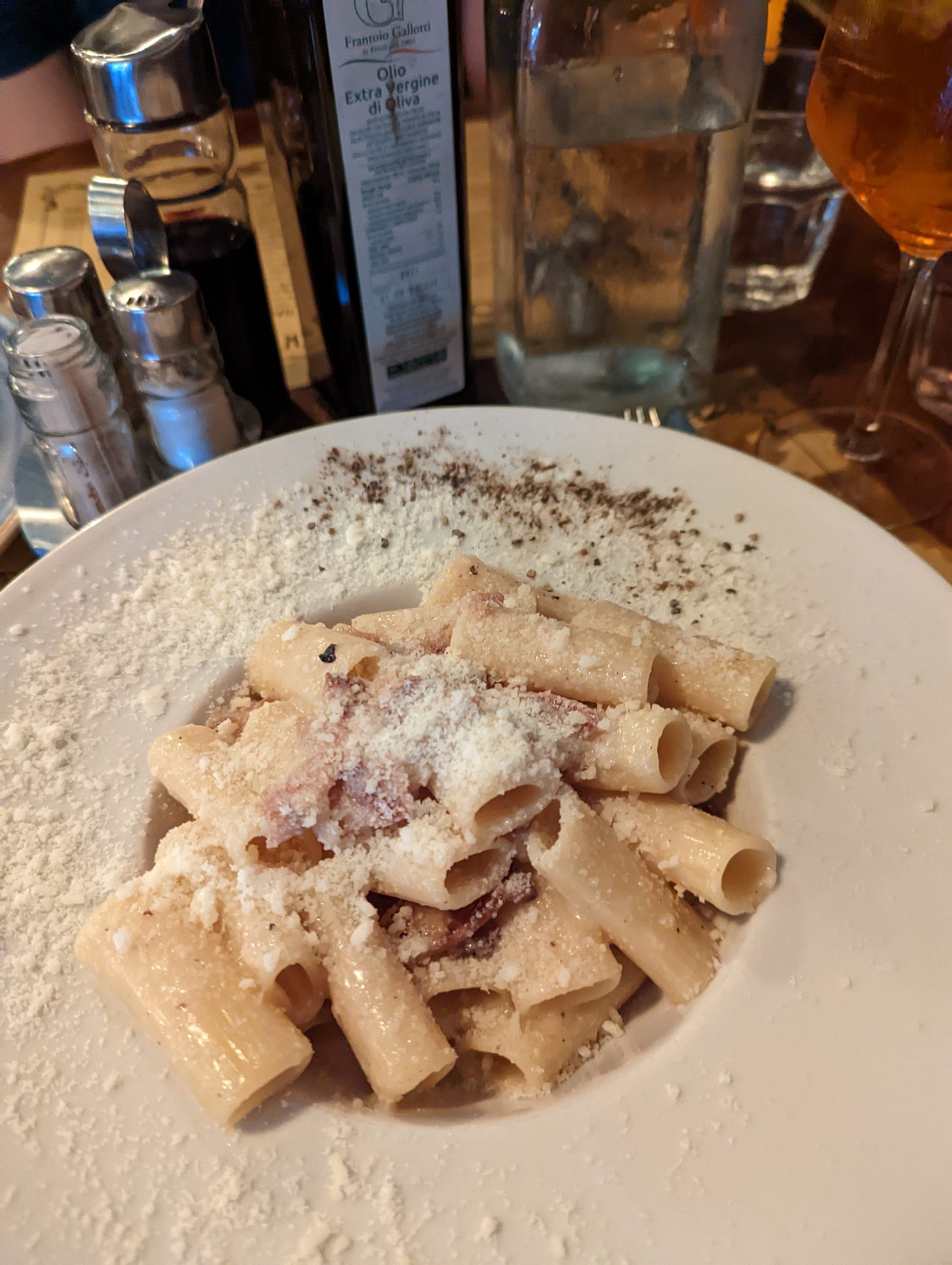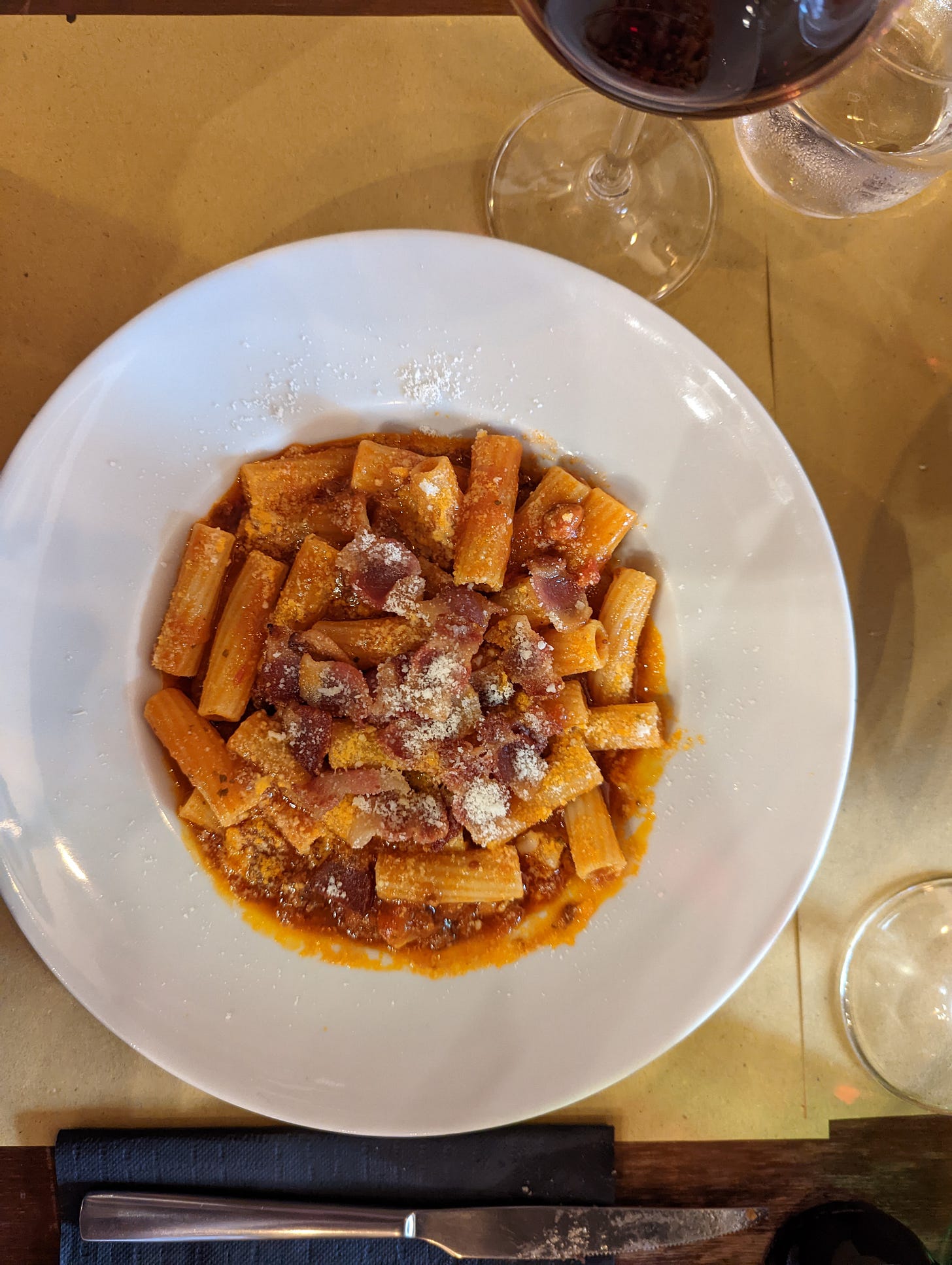A Roman Food Journey Part II: The Four Pastas
A continuation of our look around one of the world's greatest foodie cities.
This is the second in my series of Roman food reviews. Last week, I took a dive into the odd world of pizza romana. Be sure to check it out:
But let's face it when you think of Italy, you think of one thing above all others. Pasta. As the progenitors of this starchy, glutenous, carbohydratey wonder, that's exactly as it should be.
Pasta's long history is never more interesting than it is in Rome. It's even known as the city of the four pastas. Each one of these plates builds on the next, creating variety and explosions of flavour that are hard to forget.
It all begins with cacio e pepe, literally cheese and pepper which gives you a sort of clue as to the main ingredients. In fact, with the addition of pasta, they're the only ingredients. A good, strong pecorino and plenty of toasted black pepper are combined with cold water to make a thick paste. Hot pasta and a bit of starchy water are added, melting the sauce and coating the pasta to make a simple yet hard-punching delight. Try Cantina & Cucina on Via del Governo Vecchio
Pasta number two is a simple yet significant step up from the basics of the cacio e pepe. Simply adding guanciale creates alla gricia. This fatty, crispy meat is a bugger to find in the UK but is pervasive all over Italy. Taken from the jowls of the pig, it's exceptionally fatty, which enriches any sauce wonderfully. This happens to be one of the oldest dishes in Roman cuisine, making it an important piece of culinary history. Saltimbocca on Via di Tor Millina does a really good version of this classic
But what if you want a bit more from your dish? Well, then you're looking for pasta number three, carbonara. Far from the all too common sin of adding cream, all you need to do to a gricia is throw in a raw egg. It combines with the guanciale's melted fat and the starchy pasta water to make a creamy, unctuous sauce that will have you smacking your lips. The best version we had of this was at Maccheroni on Piazza delle Coppelle.
The fourth and final pasta dish is all'Amatriciana, from the village of Amatrice in Lazio (the same area of Italy as Rome). Just one ingredient is added again - tomatoes although some people add a hit of chilli to give it that extra boost. Try Saltimbocca again or Rione XIV on Borgo Pio near the Vatican.
Of course, this is just a small sampling of the huge range of pasta to be found on the cobbled, tight-knit streets of Rome.
While the longer you stay there, the more you’ll want to explore the vast array of culinary delights, the four pastas are an excellent entry into what it means to eat like a Roman.
Next week, we end our tour of the Roman culinary world by looking at a few of the less-known things you simply have to try.








